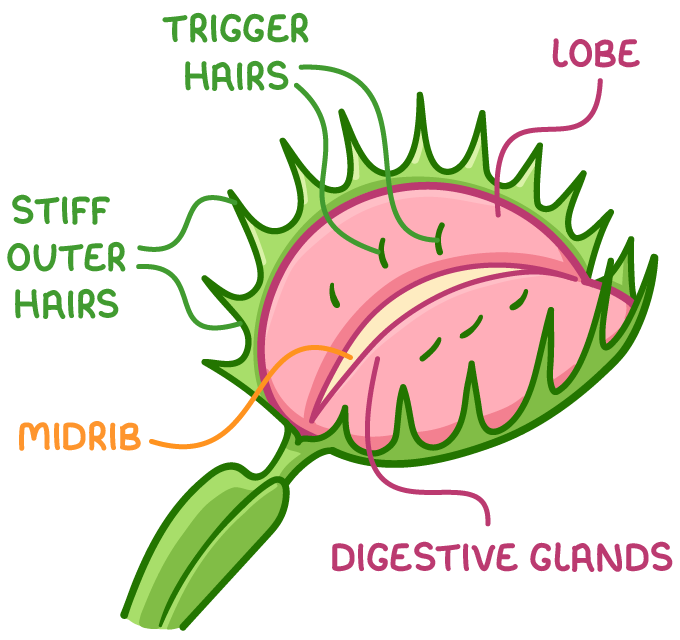Electrical Communication in Plants
This lesson covers:
- Stimuli that can trigger plant action potentials
- Comparing plant and animal action potentials
- How the Venus flytrap trap works to capture prey
Action potentials in plants
Plants can generate action potentials in response to various stimuli.
These stimuli include:
- Touch
- Chemicals (like acid on the plant's surface)
- Physical damage
- Stress
Differences between plant and animal action potentials
There are some key differences between plant and animal action potentials.
For instance, unlike animal action potentials, plant action potentials:
- Rely on the flow of different ions (like chloride and potassium)
- Propagate through cell membranes and plasmodesmata (structures that connect plant cells) rather than neurones
- Are slower
- Last longer
An example of electrical communication in the Venus flytrap
The Venus fly trap is a carnivorous plant that obtains nitrogen compounds by trapping and digesting small animals, mostly insects.

The Venus flytrap captures prey through a sophisticated mechanism:
- Sensory trigger hairs on the lobes of a trap's leaves detect prey.
- This triggers the mechanical opening of calcium ion (Ca2+) channels.
- The influx of Ca2+ into cells at the base of the hair creates a receptor potential, initiating a series of action potentials.
- These action potentials lead to rapid changes in cell tension.
- This changes the shape of the lobes on the leaf from convex to concave, and causes the trap to snap shut.
- Stiff outer hairs on the lobes interlock to capture the insect inside the trap.
- Ca2+ also stimulates the exocytosis of vesicles containing digestive enzymes from gland cells.
- The enzymes break down the captured prey within the closed trap.
- After digestion, cells on the upper surface of the midrib of the Venus fly trap grow slowly.
- This causes the leaf to reopen and reset the trap.
How the Venus flytrap prevents wasting energy
To conserve energy and avoid wasteful triggering, the Venus flytrap's closure mechanism is finely tuned.
It prevents wasteful triggering as follows:
- Closure requires simultaneous stimulation of multiple sensory hairs or repeated contact within a short period.
- The small gaps between the stiff outer hairs, which tiny insects can escape through, save resources for digesting larger prey.